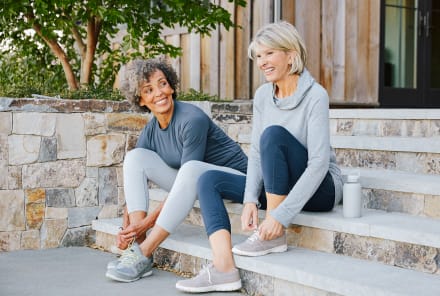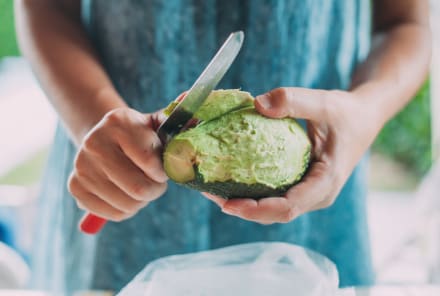Advertisement
New Research Suggests The Pandemic Accelerated Puberty In Girls


The COVID-19 pandemic changed the lives of many people forever, including young teens and children. According to new data, the rate of young girls experiencing early-onset puberty skyrocketed simultaneously. Below, the possible causes and why this is so important.
The study breakdown
Over the past two years, the number of young girls referred to pediatric endocrinologists for suspected early-onset puberty, or idiopathic central precocious puberty (ICPP), increased significantly. Health centers from many different countries reported this phenomenon, according to a new study published in the Journal of the Endocrine Society.
Researchers set out to investigate suspicions of an increased rate of early-onset puberty in young women in Italy, specifically.
The researchers retrospectively analyzed data, using collections of girls who visited medical professions with suspected ICPP. The patients included in the study had a range of symptoms that align with early puberty including breast development before the age of 8 and one or more of the following criteria:
- Increased height velocity
- Advanced bone development
- Peak basal serum luteinizing hormone (LH)
- Negative brain magnetic resonance imaging
Those who did not meet the criteria but showed other signs of early-onset puberty were defined as slowly progressive ICPP and were followed up with a second assessment.
Data from those diagnosed with rapidly progressive ICPP pre-pandemic (between January 2016 and February 2020) were in one group, while girls diagnosed with the same condition during the pandemic (between March 2020 and June 2021) were put in another group. This time range aligned with the lockdowns in Italy, when schools were closed, and many had reduced physical activity. None of the girls in this study had COVID-19 before their diagnosis.
Researchers were curious if the conditions of the lockdown contributed to the rates of ICPP in the second group. So they collected medical data on the girls in this group (body mass index [BMI], radiological data including bone age, uterine length, ovarian volume, and neuroradiological data) and also conducted phone interviews with their parents. On these calls, they inquired about lifestyle changes that occurred during the pandemic, including eating habits, exercise, screen time, etc. They also took into account the family history of early puberty.
The takeaway from these interviews was that in the group of girls experiencing early puberty during the pandemic, 88.5% of them stopped physical activity altogether due to the pandemic. Those in the group also spent an average of two or more hours a day using electronic devices.
A higher incidence of rapidly progressive ICPP was found in the second group reported during the pandemic (53.5% of girls with suspected early puberty who were diagnosed with rapidly progressive ICPP) compared to those before it (41.1%).
When broken down by age group, the incidence of early puberty in girls under the age of 8 was significantly higher during the pandemic, while those reaching puberty after 8 years of age were higher in the pre-pandemic group. The data also showed increased insulin levels in the group experiencing early puberty during the pandemic.
"Further studies are needed to investigate how the increasing use of digital devices, the reduction of daily physical activity and changes in sleep patterns impact on body composition and fat distribution, and how this influences children's pubertal development," the researchers write in the study's conclusion section.
What causes early-onset puberty?
Before the pandemic, obesity was the most frequently proposed risk factor of early-onset puberty. "Adipose (fat) tissue converts circulating androgens into estrogen, which can then serve to kick off puberty since the body isn't particularly picky about the 'source' of the estrogen," functional medicine gynecologist Wendie Trubow, M.D., MBA, tells mindbodygreen.
However, this new research suggests that other influences, including a sedentary lifestyle and increased screen time, may contribute directly to early puberty activation. "Children typically don't have high levels of circulating androgens, so it's not only the increased BMI since you need the androgens to be produced for this phenomenon to happen," Trubow explains.
So while BMI may play a role in early-onset puberty, it's certainly not the only driver—and this new research shines a light on that.
Why this is concerning
The finding of this study is more than just data in a vacuum; it's seriously impacting the lives of young girls. "Early puberty is concerning from a few perspectives," Trubow states.
Firstly, Trubow explains that any girl who undergoes early or premature puberty will reach her adult height earlier, which may impact her growth and development later on in life. Socially, girls who experience early puberty are more likely to be treated age-inappropriately and experience sexual assault1, according to research.
Not to mention, physically developing at a significantly younger age than your peers can also isolate you and make you feel out of place—exacerbating something many young girls already struggle with.
Can you prevent early-onset puberty?
All of this to say: Is there any way to prevent early puberty?
There are a few factors out of our control that may increase the risk of early puberty, including genetics. Still, data related to BMI and pandemic-related lifestyle changes implies that staying active, both socially and physically, is of the utmost importance for young girls (and all people, for that matter).
According to Trubow, the best thing parents can do if they're concerned is to prioritize whole and natural foods at home when possible and encourage movement in any way they see fit. That being said, overexercise has also been shown2 to delay puberty onset, so it's important to find a middle ground and support children in activities they enjoy doing.
The takeaway
A new study found a 12% increase in young girls diagnosed with rapidly progressive early-onset puberty during the COVID-19 pandemic, likely due to lifestyle changes. This is an important topic given that early onset puberty can have a negative impact on girls' physical, mental, and social well-being.
While nobody could predict the pandemic or ward off other uncontrollable factors at play, this research reminds us that encouraging physical activity, as well as supporting the mental health of young girls, is crucial for healthy development.
Watch Next
Enjoy some of our favorite clips from classes
Enjoy some of our favorite clips from classes
What Is Meditation?
Mindfulness/Spirituality | Light Watkins
Box Breathing
Mindfulness/Spirituality | Gwen Dittmar
What Breathwork Can Address
Mindfulness/Spirituality | Gwen Dittmar
The 8 Limbs of Yoga - What is Asana?
Yoga | Caley Alyssa
Two Standing Postures to Open Up Tight Hips
Yoga | Caley Alyssa
How Plants Can Optimize Athletic Performance
Nutrition | Rich Roll
What to Eat Before a Workout
Nutrition | Rich Roll
How Ayurveda Helps Us Navigate Modern Life
Nutrition | Sahara Rose
Messages About Love & Relationships
Love & Relationships | Esther Perel
Love Languages
Love & Relationships | Esther Perel
What Is Meditation?
Box Breathing
What Breathwork Can Address
The 8 Limbs of Yoga - What is Asana?
Two Standing Postures to Open Up Tight Hips
How Plants Can Optimize Athletic Performance
What to Eat Before a Workout
How Ayurveda Helps Us Navigate Modern Life
Messages About Love & Relationships
Love Languages
Advertisement

This Underconsumed Nutrient Helps Fight Gum Inflammation, Study Shows
Molly Knudsen, M.S., RDN

Research Shows Cognitive Longevity Depends On These 3 Critical Vitamins
Molly Knudsen, M.S., RDN

This Underconsumed Nutrient Helps Fight Gum Inflammation, Study Shows
Molly Knudsen, M.S., RDN

This Underconsumed Nutrient Helps Fight Gum Inflammation, Study Shows
Molly Knudsen, M.S., RDN

Research Shows Cognitive Longevity Depends On These 3 Critical Vitamins
Molly Knudsen, M.S., RDN

This Underconsumed Nutrient Helps Fight Gum Inflammation, Study Shows
Molly Knudsen, M.S., RDN











